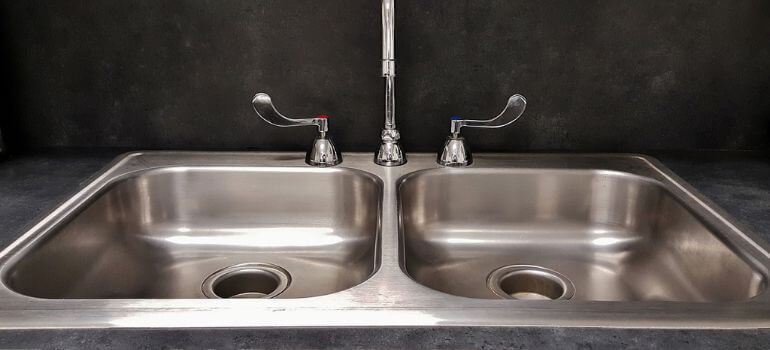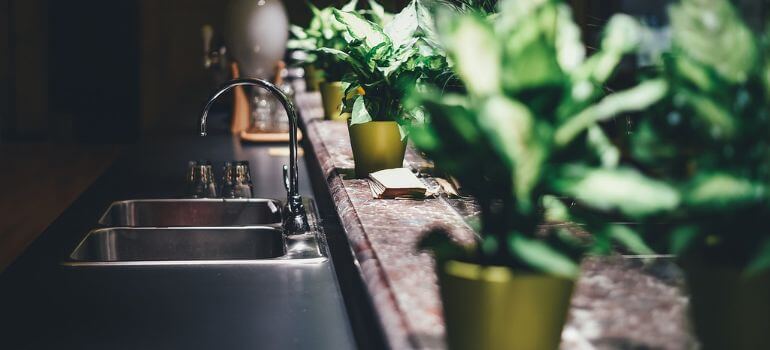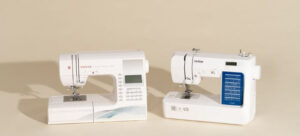Kitchen sinks play a vital role in daily activities, from meal preparation to dishwashing. The choice of sink material is crucial for both functionality and aesthetics. In this comprehensive guide, we will delve into the world of two popular sink materials – Silgranit and Fireclay – to help you make an informed decision for your kitchen.
Introduction
Brief overview of kitchen sink materials
The market offers a plethora of sink materials, each with its unique set of characteristics. Among these, Silgranit and Fireclay stand out for their durability and timeless appeal.
Importance of choosing the right sink material
The sink is a focal point in the kitchen, and its material not only influences aesthetics but also impacts functionality. Choosing the right material ensures longevity and satisfaction with your kitchen investment.
Silgranit Sinks
Definition and composition
Silgranit is a composite material made of 80% granite stone particles and acrylic resin. This composition results in a sturdy and resilient sink material.
Advantages
Durability
Silgranit sinks are known for their exceptional durability, resisting scratches, chips, and stains with ease.
Heat resistance
With excellent heat resistance, Silgranit sinks can withstand high temperatures, making them ideal for busy kitchens.
Variety of colors
Homeowners can choose from a wide range of colors, allowing for customization and coordination with kitchen aesthetics.
Disadvantages
Cost
Silgranit sinks can be more expensive than some alternatives, making them a premium choice.
Limited shapes and styles
While versatile, Silgranit sinks may have fewer shape and style options compared to other materials.
Fireclay Sinks

Definition and composition
Fireclay sinks are crafted from a mix of clay and glaze, fired at high temperatures for a durable and glossy finish.
Advantages
Classic aesthetic
Fireclay sinks exude a classic, timeless charm that complements various kitchen styles.
Resistant to scratches
The hard-fired surface of fireclay makes it resistant to scratches, ensuring a long-lasting, pristine appearance.
Easy maintenance
Cleaning and maintaining fireclay sinks are relatively simple, requiring standard household cleaners.
Disadvantages
Weight
Fireclay sinks tend to be heavier than some alternatives, necessitating proper installation support.
Limited color options
While classic, fireclay sinks offer a more restricted color palette compared to Silgranit.
Silgranit vs. Fireclay: A Detailed Comparison
Durability and longevity
Both materials boast impressive durability, but Silgranit’s resistance to scratches and stains may give it a slight edge in high-traffic kitchens.
Heat resistance
Silgranit’s exceptional heat resistance makes it suitable for handling hot pots and pans, a feature that might appeal to avid cooks.
Design options
Fireclay’s timeless aesthetic may be preferred for traditional kitchens, while Silgranit’s modern color choices offer versatility.
Maintenance and cleaning
Silgranit’s non-porous surface makes cleaning a breeze, while fireclay’s easy maintenance suits those seeking a low-maintenance option.
Cost considerations
When comparing Silgranit and Fireclay sinks, one crucial aspect that often influences the decision-making process is cost. Both materials come with their own price points, and understanding the cost considerations can help you make an informed choice based on your budget and long-term investment goals.
Silgranit Sinks:
Silgranit sinks are recognized for their durability, heat resistance, and a variety of color options, but they do come with a higher upfront cost compared to some other sink materials. The initial investment may be a bit more significant, but many homeowners find the long-term benefits, such as reduced maintenance and lasting aesthetic appeal, justify the higher price.
Fireclay Sinks:
Fireclay sinks, while offering a classic and timeless aesthetic, are generally considered more budget-friendly than Silgranit. The cost of fireclay sinks can vary based on factors such as brand, size, and design. While they may be more affordable upfront, it’s essential to consider other aspects like installation costs, as fireclay sinks are heavier and may require additional support.
Considerations:
- Upfront Cost vs. Long-Term Investment:
- Silgranit may have a higher initial cost, but its durability and resistance to scratches and stains can lead to long-term cost savings by reducing the need for replacements or repairs.
- Installation Costs:
- Fireclay sinks, due to their weight, may incur higher installation costs. Ensure that your kitchen cabinets and countertop can adequately support the sink.
- Aesthetic Preferences:
- Consider whether the aesthetic appeal of Silgranit’s modern colors or Fireclay’s classic charm aligns better with your kitchen style and personal preferences.
- Return on Investment:
- Assessing the long-term value and return on investment is crucial. Silgranit’s longevity and minimal maintenance may outweigh the initial cost difference.
In conclusion, while Silgranit may have a higher upfront cost, the decision should be based on a holistic view, considering your budget, aesthetic preferences, and long-term investment goals. It’s recommended to weigh the benefits of each material and choose the one that best suits your kitchen needs and lifestyle.
Choosing the Right Sink for Your Kitchen
Consideration of kitchen style
Selecting a sink that complements your kitchen’s style ensures a cohesive and visually appealing design.
Budget constraints
While both materials have their merits, aligning your choice with your budget is crucial for a satisfactory purchase.
Lifestyle and cooking habits
Evaluate your daily kitchen activities to determine whether Silgranit’s resilience or fireclay’s classic charm suits your lifestyle.
Real-Life Experiences
Testimonials and user reviews
Reading about others’ experiences can provide valuable insights into the performance and satisfaction of Silgranit and Fireclay sinks.
Comparisons based on customer feedback
Analyzing customer feedback helps gauge how each material aligns with different preferences and needs.
Tips for Maintenance
Maintaining the longevity and pristine appearance of your kitchen sink is crucial for both functionality and aesthetics. Whether you’ve chosen a Silgranit or Fireclay sink, following specific maintenance tips will ensure your investment stands the test of time.
Silgranit Maintenance Tips:
- Use Non-Abrasive Cleaners:
- Silgranit sinks benefit from regular cleaning with non-abrasive, mild cleaners. Avoid harsh chemicals that can compromise the sink’s finish.
- Promptly Clean Stains:
- Attend to spills and stains promptly. Silgranit’s resistance to stains is a significant advantage, and quick cleaning ensures lasting beauty.
- Avoid Harsh Scrubbers:
- While Silgranit is durable, using abrasive scrubbers can cause scratches. Opt for soft sponges or cloths to maintain the sink’s smooth surface.
- Periodic Sealing (if applicable):
- Some Silgranit sinks may benefit from periodic sealing. Check the manufacturer’s recommendations and follow their guidelines.
Fireclay Maintenance Tips:
- Regular Cleaning with Mild Solutions:
- Fireclay sinks are relatively easy to maintain. Regularly clean the surface with mild solutions or gentle soap to prevent the buildup of residue.
- Avoid Abrasive Materials:
- Similar to Silgranit, refrain from using abrasive materials or harsh chemicals that can damage the glazed finish of the sink.
- Gentle Scrubbing:
- Use soft brushes or sponges for cleaning. Avoid aggressive scrubbing, especially on the glazed surface, to preserve its aesthetic appeal.
- Prevent Heavy Impacts:
- While durable, fireclay sinks can chip if subjected to heavy impacts. Take care when handling heavy pots and pans to prevent accidental damage.
General Maintenance Tips for Both:
- Regular Inspections:
- Periodically inspect your sink for any signs of wear, chips, or damage. Early detection allows for timely repairs.
- Mind the Temperature:
- Both Silgranit and Fireclay sinks are resistant to heat, but extreme temperature changes can affect any material. Avoid placing hot pans directly from the stove into the sink.
- Follow Manufacturer Guidelines:
- Always adhere to the manufacturer’s guidelines for maintenance. Different brands may have specific recommendations for their products.
By incorporating these maintenance tips into your routine, you can ensure that your Silgranit or Fireclay sink remains in excellent condition, maintaining its functionality and aesthetic appeal for years to come.
Conclusion
Recap of key points
Both Silgranit and Fireclay have distinct advantages and considerations. Consider your preferences, budget, and kitchen dynamics when making the final decision.
Personalized recommendation based on individual needs
For a contemporary kitchen with a focus on durability and versatility, Silgranit is an excellent choice. Those seeking a classic aesthetic and easy maintenance may find Fireclay more suitable.
FAQs (Frequently Asked Questions)
Both Silgranit and Fireclay sinks offer impressive durability, but the choice depends on specific needs. Silgranit excels in scratch and stain resistance, while Fireclay is known for its classic aesthetic and durability.
Yes, Silgranit sinks offer a wide range of color options, allowing homeowners to choose a sink that complements their kitchen decor.
Fireclay sinks tend to be heavier than some alternatives, so proper installation support is essential to ensure stability and longevity.
Silgranit sinks are relatively low-maintenance. Regular cleaning with non-abrasive cleaners is recommended to preserve their appearance.
Yes, Fireclay sinks are heat-resistant, making them suitable for handling hot pots and pans in the kitchen.



